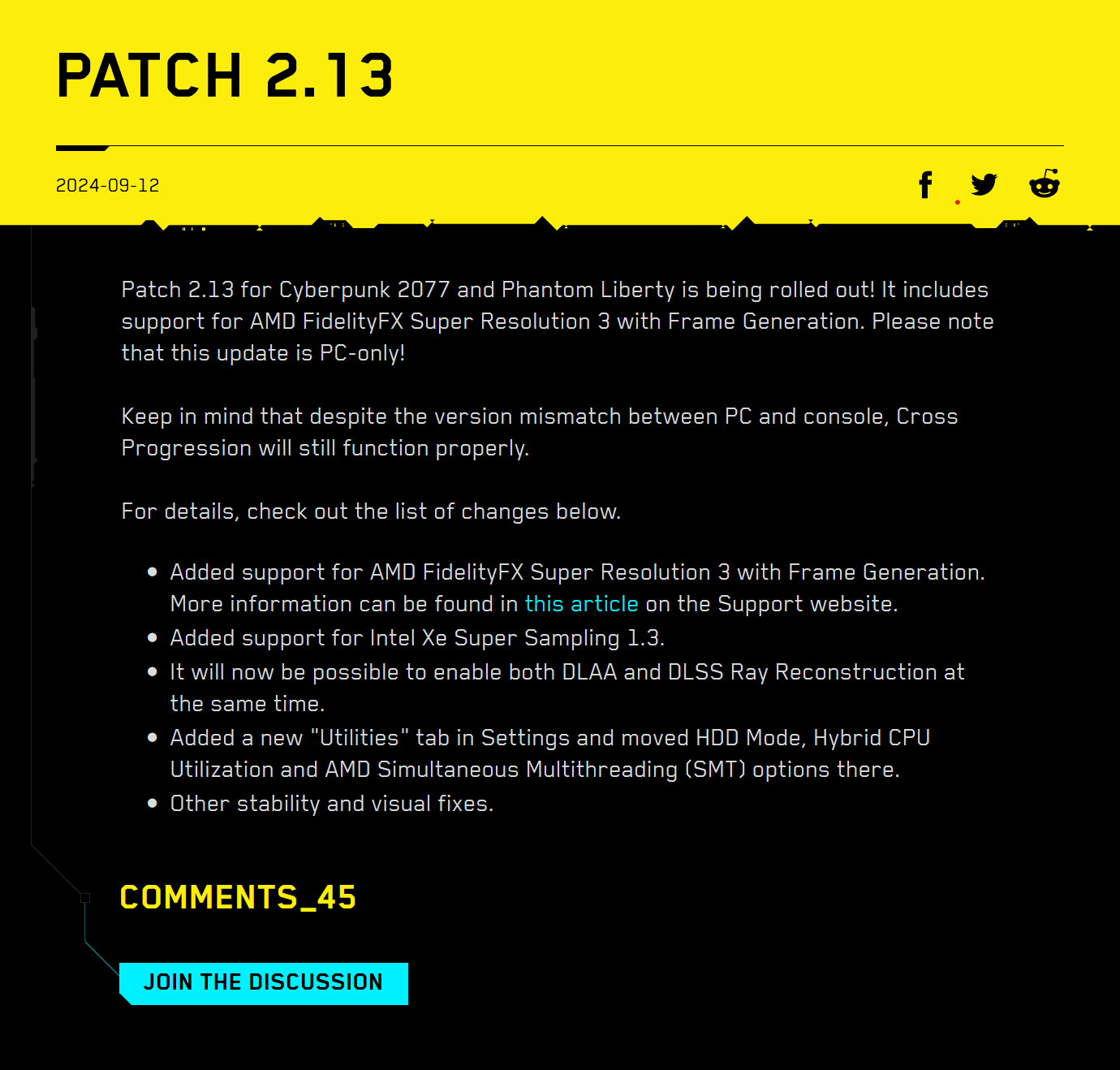After months of waiting,Cyberpunk 2077players now have access to AMD FidelityFX Super Resolution 3 featuring frame generation.Patch 2.13adds FSR 3 to the game and incorporates support for IntelXeSS 1.3— Intel’s own AI-based upscaling solution. The patch has also improved DLSS functionality, allowing RTX gamers to enable DLAA andRay Reconstructionsimultaneously, along with more game-focused stability and visual fixes.
FSR 3is a significant upgrade from the game’s existing FSR 2.1 implementation — incorporating frame generation into the technology’s performance-enhancing tools. Frame generation boosts performance by creating a new frame based on information from two different frames in the 3D rendering pipeline. However, the technology isn’t without its caveats. Input lag is worse with frame generation, making the game feel like it is operating at a much lower frame rate. For instance, if frame generation boosts performance to 60 frames per second, the penalty to input lag can make the game feel like a 30 FPS experience.

Rather than ditching FSR 2.1 in favor of FSR 3, the devs behindCyberpunk 2077have kept FSR 2.1 in the game alongside adding FSR 3 support. This was purportedly done to give players flexibility in choosing their preferred visual quality and performance.
FSR 3 will enable frame generation technology inCyberpunk 2077on non-Nvidia GPUs for the very first time. This will be very beneficial for AMD and Intel GPUs to run the game’s extremely demanding ray tracing and path tracing lighting effects, which are incredibly demanding on the GPU. Most RTX GPUs require DLSS 3 Frame Generation in order to hit 60 FPS in the game’s most demanding path tracing graphics mode, let alone Intel and AMD GPUs, which have less powerful ray tracing capabilities.

The only thing we are disappointed to see is that theCyberpunk 2077devs opted to choose the vanilla FSR 3.0 model rather than the latest 3.1 flavor.FSR 3.1adds significant quality-of-life updates to the technology’s image quality capabilities by drastically reducing ghosting for objects in motion and improving upscaling quality in general. AMD also went the extra mile to decouple frame generation from FSR’s upscaling functionality, enabling other upscalers to work in conjunction with FSR 3 frame generation. This would have been beneficial for Intel users, who would have been able to run XeSS with FSR 3 frame generation if the game supported FSR 3.1.
Anti-Lag 2is also missing — this would have improvedCyberpunk 2077’sinput latency, helping reduce FSR 3 frame generation’s input latency penalty.

Regardless, non-Nvidia gamers now have a proper frame generation tool they can use in-game they can take full advantage of. This should help Intel and AMD gamers achieve playable frame rates withCyberpunk 2077’smore demanding graphical settings.
Get Tom’s Hardware’s best news and in-depth reviews, straight to your inbox.
Aaron Klotz is a contributing writer for Tom’s Hardware, covering news related to computer hardware such as CPUs, and graphics cards.